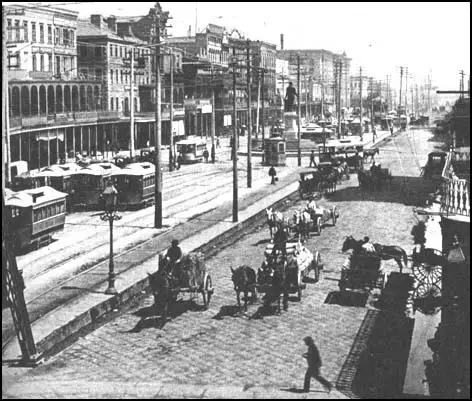New Orleans
New Orleans was established by French settlers on the mouth of the Mississippi-Missouri river system in 1718. Large areas of underbrush was cleared but mosquito-infested swamps caused outbreaks of disease amongst the workers. Two severe hurricanes in 1721 and 1722 also hampered developments.
New Orleans was designated the capital of Louisiana in 1722. At that time there were 470 people living in the town. Local crops included tobacco, indigo, rice and vegetables.
Under the terms of the Treaty of Paris (1763), Spain received New Orleans and the Louisiana Territory west of the Mississippi. In 1803 it was returned to France and three years later it was sold to the United States. Over the next 50 years New Orleans established itself as America's main cotton port. With over 400 Mississippi River steamboats, New Orleans was the world's fourth most important port by 1840.
In the middle of the 19th century New Orleans became popular with German and Irish immigrants and the population grew to over 116,000 by 1850. No proper sewerage system existed and there were several outbreaks of cholera and yellow fever, which killed 8,000 people in 1853.
By the beginning of the 20th century, unable to compete with the railroads, the river steamboats had almost disappeared. It now had a population of 287,140 but growth had been smaller than other cities and in sixty years had dropped from 3rd to 12th largest in the United States.

